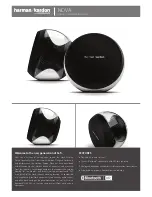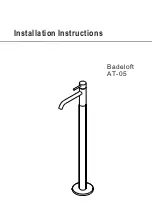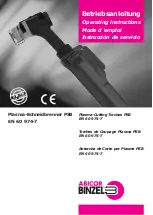
Operation
SR-100i User’s Manual
10.
Set the Current thumbwheel according to the cutting chart in this section.
11.
Set the Mode Switch to the proper mode, as previously described.
12.
The cutting operation is initiated after a start signal is received. The arc
should establish after approximately 2 seconds of gas preflow. Throughout
the cut, the red D.C. Power light on the front panel should be illuminated to
indicate that current is flowing through the torch. The cutting operation is
terminated when the start signal is removed. At the completion of a cut, gas
should flow through the torch for approximately 10 seconds.
Cut Quality
Before the optimum cutting condition can be achieved on a particular material
type and thickness, the machine operator must have a thorough understanding of
the cutting characteristics of the SR-100i system. When the cut quality is not
satisfactory, the cutting current, speed, or torch height may need to be adjusted
until the proper cutting condition is obtained. The following guidelines should be
useful in determining which cutting parameter to adjust.
Note: Before making any parameter changes, verify that the torch is square
to the workpiece. Also, it is essential to have the correct torch parts in place
and to ensure that they are in good condition. Check the electrode for
excessive wear and the nozzle orifice for roundness. Also, make sure that the
air pressure is adjusted to 85 psi with the Gas switch in the Set position and
that the air supply is not contaminated.
1. A positive cut angle (top dimension of piece smaller than the bottom
dimension) usually occurs when the torch standoff distance is too high, when
cutting too fast, or when excessive power is used to cut a given plate
thickness.
2. A negative cut angle (top dimension of piece larger than the bottom
dimension) usually occurs when the torch standoff distance is too low or when
the cutting speed is too slow.
3. Top dross usually occurs when the torch standoff distance is too high.
4. Bottom dross usually occurs when the cutting speed is either too slow (slow-
speed dross) or too fast (high-speed dross). Low-speed dross is easily
removed, while high-speed dross usually requires grinding or chipping off.
5. Note that different material compositions have an effect on dross formation.
4-7
Summary of Contents for SR-100i
Page 2: ...This page intentionally left blank ...
Page 8: ...This page intentionally left blank ...
Page 20: ...This page intentionally left blank ...
Page 24: ...Installation SR 100i User s Manual SR 100i Figure 3 2 Power Supply Output Connections 3 4 ...
Page 27: ...Installation SR 100i User s Manual SR 100i Figure 3 4 Gas Supply Connections 3 7 ...
Page 37: ...Operation SR 100i User s Manual Figure 4 4 Mild Steel Cutting Chart 30 50 amps 4 9 ...
Page 38: ...Operation SR 100i User s Manual Figure 4 5 Mild Steel Cutting Chart 75 100 amps 4 10 ...
Page 39: ...Operation SR 100i User s Manual Figure 4 6 Stainless Steel Cutting Chart 30 50 amps 4 11 ...
Page 40: ...Operation SR 100i User s Manual Figure 4 7 Stainless Steel Cutting Chart 75 100 amps 4 12 ...
Page 41: ...Operation SR 100i User s Manual Figure 4 8 Aluminum Cutting Chart 30 50 amps 4 13 ...
Page 42: ...Operation SR 100i User s Manual Figure 4 9 Aluminum Cutting Chart 75 100 amps 4 14 ...
Page 59: ...Parts List SR 100i User s Manual Figure 6 1 Control Panel 6 3 ...
Page 60: ...Parts List SR 100i User s Manual SR 100i Figure 6 2 Rear View Inside 6 4 ...
Page 61: ...Parts List SR 100i User s Manual Figure 6 3 Base Top View 6 5 ...
Page 62: ...Parts List SR 100i User s Manual Figure 6 4 Left Side View 6 6 ...
Page 63: ...Parts List SR 100i User s Manual Figure 6 5 Right Side View 6 7 ...
Page 64: ...Parts List SR 100i User s Manual SR 100i Figure 6 6 Rear View Outside 6 8 ...
Page 69: ...Parts List SR 100i User s Manual Chopper P C Board Figure 6 10 Chopper P C Board 6 13 ...
















































